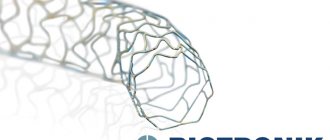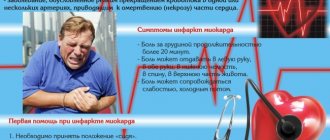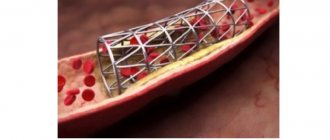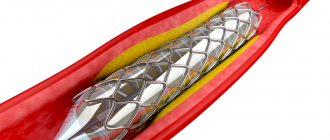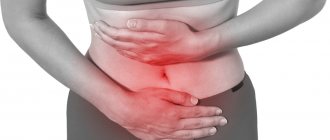Author Andrey Belyakov
03/12/2008 10:36 (Updated: 08/20/2021 12:19)
Health » Health and prevention
The vast majority of heart attack survivors can safely return to driving. In some cases, having your own car turns out to be not only not harmful, but also extremely useful. Agree, it’s one thing to get to work on foot or jostled in public transport, and quite another thing to drive calmly in your own car. But just really calm.
What post-infarction indicators affect the ability to drive?
The brain processes information slowly at first. A person’s speed of perception and reaction decreases, which prevents him from reacting to a traffic situation in a timely manner. An extensive infarction leads to the formation of multiple scars that impair the contractile function of the muscle. This often provokes loss of consciousness or repeated attacks.
List of evaluation criteria that do not allow you to drive independently:
- unstable psycho-emotional state;
- physical weakness and slow recovery rate;
- the myocardium was severely damaged as a result of circulatory disorders;
- there is arrhythmia or tachycardia.
The presence of one of these indicators (and they appear in absolutely everyone at first) prevents a person from driving in person. Until his condition stabilizes, he is advised to move around in another way for his own safety. If the evaluation criteria meet the restoration standards, the motorist can obtain permission to drive land vehicles.
When the heart and nervous system are so strong that a person feels comfortable behind the wheel, doctors allow him to drive a car. This is included in the recovery plan, since when moving by transport, the cardio system is not loaded as much as when walking.
But is it possible to work as a driver after a heart attack? There are laws in the Russian Federation that prohibit engaging in this type of activity. The director, based on the conclusion of the VTEK and the person’s application, provides him with a position not related to driving.
In what cases can you return to driving?
According to many doctors, returning to driving after a heart attack is one of the stages of rehabilitation. But they allow access to the steering wheel only if a person’s confidence in this desire is beyond doubt, and the condition of his heart after the damage caused by a heart attack allows him to experience the stress associated with the process of driving.
It is important in this regard that the patient should not have anxiety, irritation, or fear; he should be comfortable behind the wheel. It will also be mandatory to undergo all necessary examinations in order to provide the attending physician with the information necessary to analyze the patient’s condition.
The approximate period that doctors call normal for returning to driving a vehicle after a heart attack is two months. It is this amount of time, from a medical point of view, that is enough to gain confidence in one’s state of health, taking into account the completion of all necessary rehabilitation measures. Here it is worth understanding that this is a conditional figure, and each individual case of myocardial infarction is considered strictly individually.
It is also necessary to consider the possible options for human movement. Walking long distances greatly exhausts the body, which significantly aggravates the pre-infarction condition. A trip on public transport can often be accompanied by negative factors: crowding, heavy flow of people in public places, an increased likelihood of stressful situations. All this is more likely to provoke a deterioration in a person’s health than driving a personal car.
When returning to driving after a heart attack, you shouldn’t drive alone for the first time - on every trip you need to take a passenger with you who can provide the necessary first aid in case of a relapse or at least is aware of the driver’s health problems and will be able to call for medical help without being confused. The car first aid kit should contain the appropriate medications (nitroglycerin and those prescribed by the attending physician), and if there is any hint of a deterioration in your health, you should refuse the planned trip.
Doctors' opinion
When you can drive after a myocardial infarction and stenting depends on the speed of recovery. General treatment predictions are that this occurs no sooner than 60 days after the attack. If a person does not have finger trembling and his psycho-emotional state has stabilized, then he is allowed to drive a car. In the presence of irritability, anxiety, tremor and other residual effects of a heart attack, driving is temporarily contraindicated.
According to doctors, moving independently by car eliminates physical and psycho-emotional stress compared to traveling by public transport or walking long distances. Therefore, in the late rehabilitation post-infarction period, you can drive a car in compliance with medical recommendations and driving principles.
Assignment of disability after stenting
The procedure of stenting, or revascularization, is designed to improve the patient’s condition and facilitate recovery after an attack. Based on the results of the procedure, the doctor evaluates its effectiveness and records the result in writing. The subsequent decision of the commission depends on how useful stenting turned out to be:
- Great effect. Good tolerance to physical activity, no or only slight angina.
- Good effect. Angina pectoris is moderate and practically does not bother me. Light physical activity is possible.
- Satisfactorily. Angina pectoris only appears after intense exercise.
- Unsatisfactory. This assessment indicates that the patient's condition has not changed.
When stenting, the principle of submitting documents and undergoing examination is the same. You can find out whether patients are given disability after stenting of cardiac vessels from their attending physician. Typically, a group is assigned if the results of the procedure are insufficient to continue a full life, but for this you will have to undergo a new examination.
Still have questions about disability after a heart attack?
Free consultation with AngioClinic specialists
Author
Salmina Daria Vladimirovna
Geneticist. Graduated from the Chelyabinsk State Medical Academy. She completed an internship at the Northwestern State Medical University named after I.I. Mechnikov.
Driving rules after a heart attack
You need to constantly monitor your well-being and health in general. Immediately before operating the machine, you need to measure your heart rate, pulse, blood pressure, and make sure that there are no failures in coordination of movements, dizziness, or blurred vision.
If your health worsens:
- before the trip - they refuse to drive;
- while driving, stop the car and press the emergency signal button.
In both cases, you need to take the medicine immediately. Nitroglycerin and other prescribed medications must be carried with you, regardless of the method or distance of movement.
Medical requirements for driving after myocardial infarction:
- Immediately after admission, it is prohibited to drive a vehicle alone. For the first 1.5-2 months, they take a passenger in case of a sudden deterioration in health.
- It is forbidden to travel far. Initially, you are allowed to drive on an uncongested road for 5-10 minutes. The duration is increased gradually, but you cannot move long distances. This will prevent overwork and reduce the risk of another attack.
- To exclude a relapse due to worries about being late for work, you can switch to a variable schedule by presenting the director with a certificate from the VKK.
- It is not recommended for drivers to travel during rush hour. Driving on a busy road increases nervous tension, which increases the risk of relapse.
Mandatory requirement for driving after a heart attack: always carry Nitroglycerin with you. If you feel worse, you need to turn on the alarm, stop and take medicine. Then call an ambulance.
conclusions
The adequacy of physical activity and restrictions in rest is determined and assessed by the doctor in the process of dispensary observation of the patient. In any case, returning to a normal lifestyle will take at least a year after a heart attack.
When expanding activity, a comprehensive examination of the patient is carried out to determine coronary reserve and exercise tolerance. Speed running, weightlifting and lifting weights are contraindicated for life. But you can drive a car after a heart attack.
Risks
At first, it is difficult for a person after a heart attack to simultaneously focus on following traffic rules and listen to his own well-being. And the status of domestic roads and the behavior of some ill-mannered drivers or pedestrians adversely affect his psycho-emotional state. Therefore, during each trip, a relapse of the disease may occur.
Repeated heart attack or loss of consciousness while driving can cause an accident. As a result of an accident, both the driver himself, the drivers of the affected cars, or bystanders can die or become disabled. Therefore, driving in the post-infarction period is always dangerous.
Is it possible to drive a car after a heart attack? VKEC specialists decide. Loss of control over the car ends in an accident and poses a threat to the lives of all road users. A person with arrhythmia and the presence of a syndrome accompanied by frequent loss of consciousness should not drive. Such people will not be able to renew their driving record during the next medical examination or, if necessary, to restore their license.
When should you not drive after a stroke?
After a stroke, a general ban on driving is imposed for a period of 3-6 months. Next, the medical commission, guided by the degree of damage and severity of the disease, after studying all the complications that have developed, will make a decision on the possibility of driving. For example, if the field of view decreases by more than 20 degrees, the medical commission will not give permission to drive a car.
As a result of a stroke, the human psyche often suffers. There may be sudden mood swings, depression, and the inability to adequately assess the situation and make quick and correct decisions. Moreover, almost all drugs used to correct mental problems are contraindicated when driving a car.
Complications such as partial paralysis or muscle spasticity are also a complete contraindication to driving.
Sometimes epilepsy develops after blood circulation in the brain is disrupted. In this case, it is impossible to drive the car.
Question answer
What form of medical certificate is needed when replacing a driver's license?
What does the law say?
Can a person drive a car after a myocardial infarction? It is prohibited to do this professionally, which was approved by Order No. 302N dated April 12, 2011. The car may become uncontrollable and an accident may occur with possible death of participants in the traffic accident or third parties.
In the post-infarction period, the driver is assigned disability group III. He is assigned a state benefit and given light physical work. But he can drive his own transport, since motorists are allowed to drive in the absence of complications of the disease.
For how long is disability granted?
A heart attack is recognized as a disease in which recovery is possible. Depending on the severity of the disease, status may be issued for one or two years. In severe cases, the status is assigned for 2 years, but in the second and third cases you will have to undergo a new examination a year after the first commission. Exceptions are possible, but they are rare.
If doctors consider that over the past period the patient feels noticeably better and can perform work functions (fully or in a limited mode), then the list of work restrictions, and with them the benefits, may be changed or canceled altogether. This decision is made based on the results of the re-examination.
They can also be allowed to work if the work does not involve serious emotional or physical stress. If the commission considers the likelihood of recovery low, then such patients may be assigned status indefinitely.
What benefits can you expect in case of refusal?
If the commission considers that the patient has fully recovered, does not require outside assistance in performing daily functions and can carry out work activities, then the status will be denied. They may not give a group even if the commission considers the current working conditions favorable. If necessary, sick leave can be extended for up to 120 days. Sometimes it is only possible to shorten the working week or indicate a change in workplace.
Without recognition of disability, the patient cannot enjoy full financial benefits. But since 2021, all people who have had a heart attack have the right to free medicines. They are issued immediately after discharge from the hospital and are subsequently provided for a year after myocardial infarction. This measure is intended to support all patients who find themselves in difficult situations and reduce the financial burden on their families. Detailed information can be found in Order of the Ministry of Health No. 1n dated January 9, 2021.
There should be no problems with the necessary medications; the authorities allowed us to receive medications six months in advance. In total, the list of free medicines contains 23 names of drugs of domestic and foreign production. They promise to expand this list until 2023.
A document to receive medications can be obtained from your attending physician. To do this, you need to bring your compulsory medical insurance policy, SNILS, passport and extract from the hospital to your appointment. With the finished prescription, you can go to the pharmacy.
How to speed up rehabilitation?
To prevent relapse and facilitate recovery, doctors may suggest coronary stenting. The minimally invasive operation is performed under local anesthesia. The surgeon inserts a stent into the femoral artery through a catheter. Then, along its channel, the device is brought to the place of narrowing. After installing the tube, the vessel wall expands along the perimeter of the lumen, which ensures normal blood circulation.
| Actions of the patient after a heart attack and/or stenting during the rehabilitation period | |
| What speeds up recovery | What must be done |
| Unquestioning adherence to all medical recommendations. | Gradually increase physical activity. |
| Rest in a sanatorium that specializes in cardiovascular diseases. | Do not lift loads exceeding 3 kg. |
| Transfer to a position with favorable working conditions. | They walk for 5-60 minutes every day, accompanied by a relative. |
| Hobby: listening to your favorite music. | Follow diet No. 10 according to Pevzner. |
| Psychologist consultations. | Avoid overwork and nervous tension. |
| Normalization of weight and cholesterol levels | They continue to take medications. |
| Quitting smoking and other bad habits. | See a cardiologist. |
A man or woman should “weed out” intimidating information about the way of life after a heart attack. At what stage of rehabilitation you can start working, driving a car, having sex and other information should only be obtained from the attending physician, who knows all the individual indicators and dynamics of rehabilitation.
Restrictions on holidays
All habits and traditions change after illness, including those related to recreation. Many patients wonder whether it is possible to go to the sea after a heart attack. In the early outpatient period, this is strictly prohibited; at the stage of sanatorium-resort treatment, it is also better to relax in your own climatic zone, without subjecting the body to the test of heat and a long road.
According to doctors' recommendations, swimming in open water is only possible 7-8 months after a heart attack. By this time, the sutures on the sternum have healed, reducing the risk of an angina attack and changes in heart rate. It is forbidden to organize swims, it is forbidden to dive or engage in diving.
At the same time, moderate swimming in the pool provides a beneficial exercise for the heart.
Stages of the therapeutic swimming cycle:
- Preparatory: breathing exercises and procedures (rubbing, dousing, foot baths).
- Basic: at a water temperature of +26°C and air temperature of +24°C, you can swim in an open pond or pool for 15-20 minutes.
- Final: carried out in water with a gradual decrease in load.
Another important issue is related to possible flights to a vacation spot. Flying on an airplane is not advisable after a heart attack and stenting, but it is not prohibited.
A number of restrictions apply here:
- do not fly earlier than six months after a severe heart attack and two weeks after an uncomplicated one;
- obtain a consultation from the attending physician and a statement about the treatment of the heart attack and the condition after it;
- before takeoff, place a Validol tablet under your tongue;
- if you feel anxious or nervous, take a sedative;
- during a long flight, periodically get up from your seat and walk around the cabin for normal hemodynamics.
It is strictly prohibited to use aviation services in case of heart failure not corrected by medications, severe arrhythmia, persistent arterial hypertension, or unstable angina.

